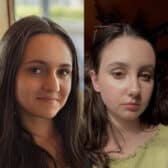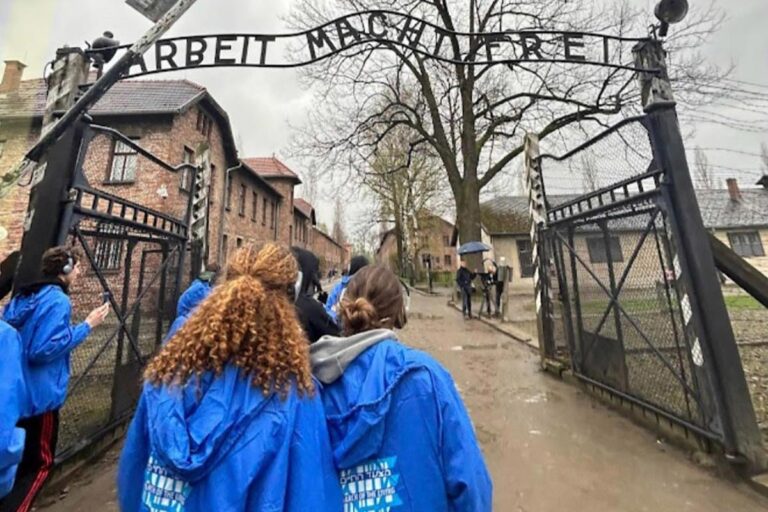
A trip to Poland might sound too emotional for some people. Many avoid taking such a trip because they do not want to face the realities of the Holocaust or feel the overwhelming emotion they know will occur when visiting the sites of unspeakable atrocities.
We understand this perspective, and before our own trips, we shared many of these concerns. And don’t get us wrong — our trips were emotional and deeply painful at times. However, after visiting Poland on a March of the Living and a family trip, we became prouder than ever of our Jewish heritage.
So, we wanted to share our personal experiences, some of the insights we gained and the impact these trips continue to have on us. If you’re thinking about visiting Poland, we hope our reflections will better prepare you for your journey.
What is March of the Living?
But first, if you’re not familiar with March of the Living, here’s a brief overview. Since it was founded in 1988, March of the Living has become one of the most significant trips for Jewish youth to take in their lives. Each year, thousands of participants from Israel, North America, and Europe, take the trip to understand the Holocaust beyond the classroom.
The trip, which happens every year on Yom Hashoah (Holocaust Remembrance Day), includes a week in Poland followed by an additional week in Israel.
During the week in Poland, students participate in a march on Yom Hashoah, walking from Auschwitz I to Birkenau. Wearing blue jackets from March of the Living, students march silently thinking of those who died on the same ground they are walking on. The march concludes with a memorial ceremony in Birkenau.
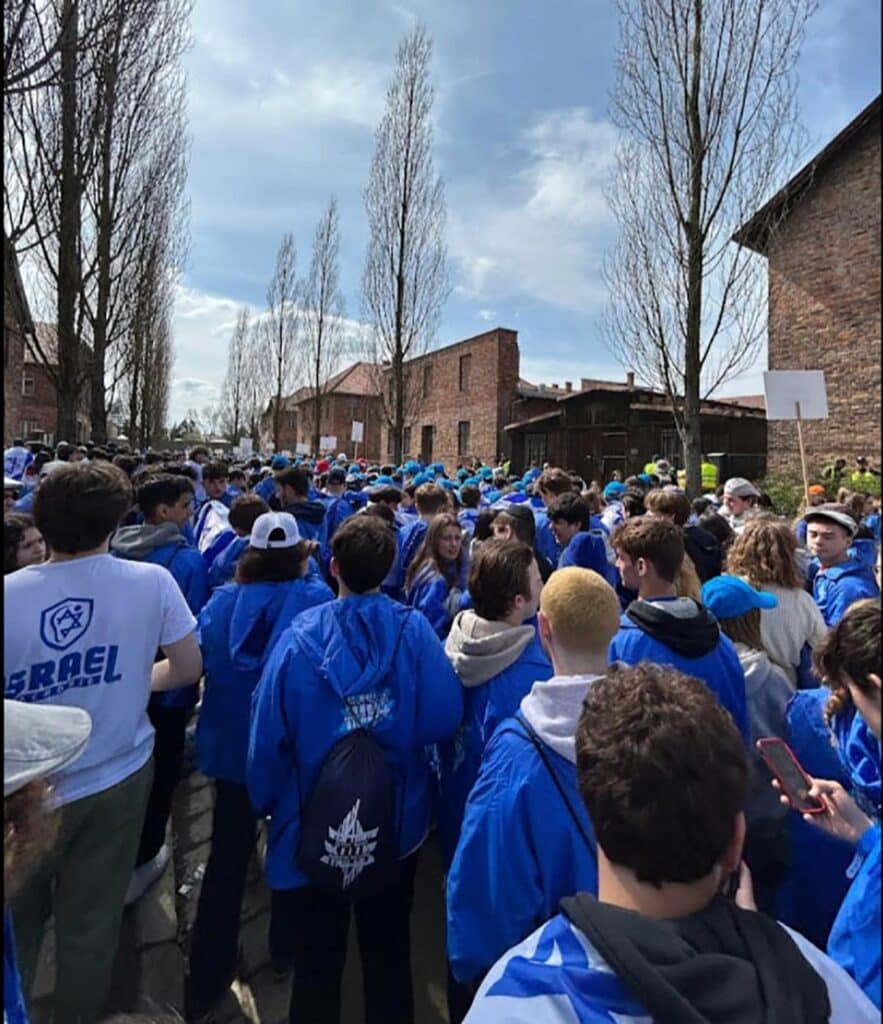
In Israel, participants take part in Yom Hazikaron (Memorial Day), mourning the lives of IDF soldiers who lost their lives while defending Israel. Then, they experience the transition from sorrow to celebration of Yom Haatzmaut (Independence Day).
Reflections from Daniella Pikman:
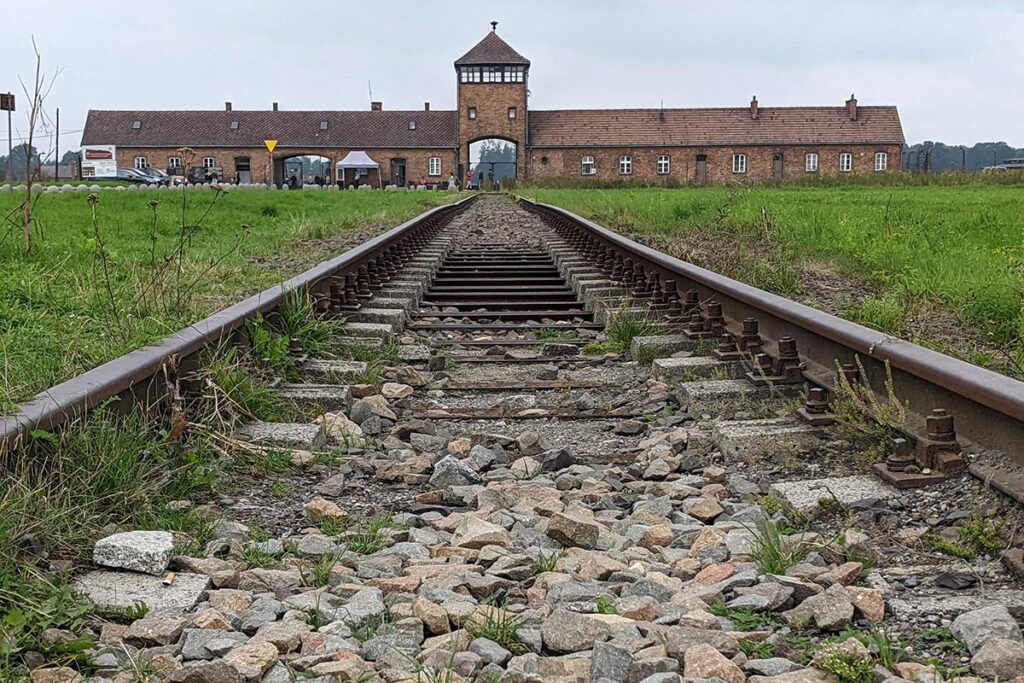
Truthfully, I dreaded the trip to Poland. It was Summer 2021, and after a year of online learning, all I wanted to do was hang out with my friends in person. I was going with my family, as my mother believed it was important for my sister and me to learn about Jewish history in the place where it occurred. I’ve been to multiple Holocaust museums and already had substantial knowledge on the topic, but was nervous about how I would react when actually being in the place where it happened.
Entering Auschwitz was surreal, walking through the gate with a tour guide, knowing that hundreds of thousands of Jews walked through that same gate and never walked out again. I visited in the early fall; it was just starting to get cold out, but the barracks in the camp were already freezing inside.
Walking through the halls with the tour was uncomfortable, with so many people in a tight-crowded space. I imagined how prisoners lived their lives like this for years. The slim hallways contained photographs and memories from the residents, ranging from the pots and pans they took with them in hopes to cook some family recipes in a foreign land, to strands of hair cut off when the Nazis stripped them of their identities.
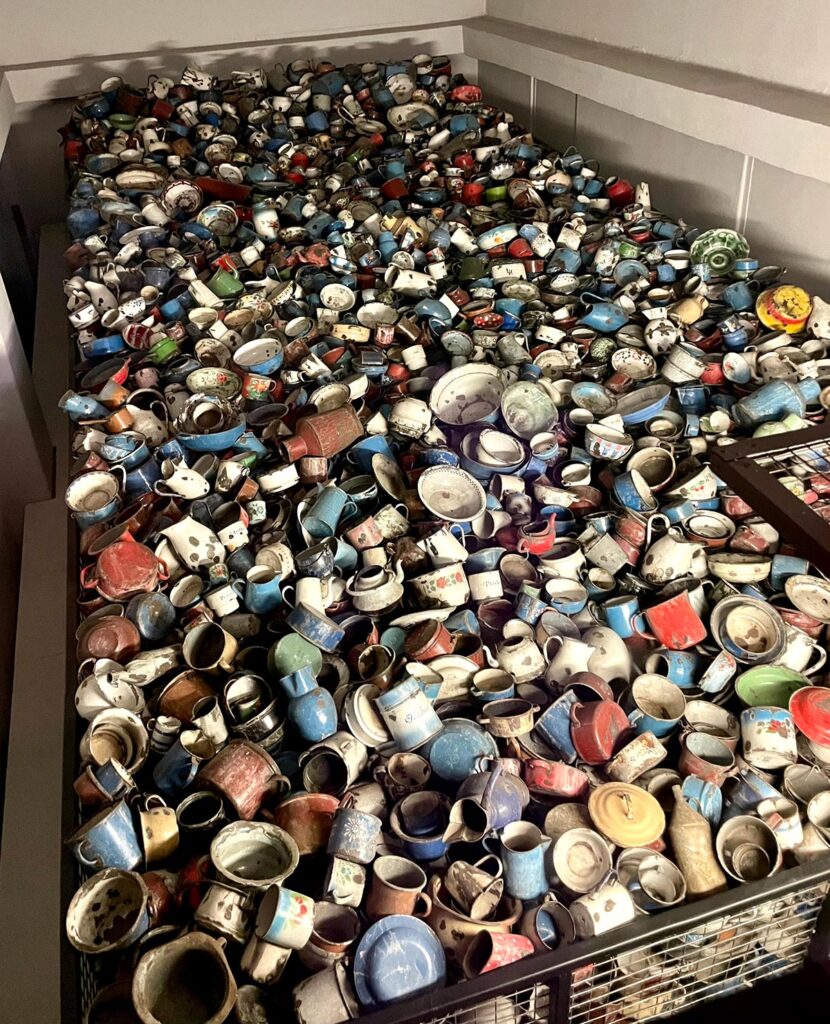
One of the most touching and eye-opening exhibits for me personally was the room of hair. You walk down a long corridor with a glass that contains over ten feet of hair. It is one of the only locations within the camp that visitors are not allowed to photograph. You could see braids tied with ribbons, carefully done by mothers who wanted their daughters to look nice for their journey.
The most painful aspect of this was the fact that people seemingly did not know what was happening. They prepared as if they were going on an exciting trip, bringing their personal belongings as if they were to live their lives comfortably and form a new home. Instead, families were ripped apart and hundreds of thousands of people were murdered within minutes of entering the camps.
I was deeply touched by the braids with ribbons still in them, realizing that girls just like myself and my sister died on this very ground. Thinking of the little girls that had bright futures ripped away from them made me tear up, so I walked away from the group to take some time alone. After a few minutes returned, only to see the other women on the tour wiping their tears. In that moment, I thought: We are all the same, all human, everyone deserves a chance at life; every little girl and boy deserves to grow up, and every mother to watch them do so. This is why we can never forget.
My family and I later visited the present-day Jewish community in Krakow, which was particularly meaningful after seeing the Warsaw ghetto. It was amazing to experience a thriving Jewish community in Poland when 80 years ago, millions of Jews were living in confined quarters and thought that could never be possible.
Krakow, unlike most other places in Poland, has seen a revival of Jewish life, largely due to Israelis who love visiting Poland and those who moved there to open restaurants. In recent years, the JCC of Krakow has been running a variety of programs to engage the local Jewish community in Jewish life. It has even opened doors to thousands of Ukrainian refugees since the beginning of the war with Russia.
I’m grateful I took this trip with my family — it was the most meaningful and educational time I’ve spent abroad by far. Although I already knew a lot about the Holocaust, witnessing the remains was unlike anything I’d expected. I realized that no amount of reading, studying, or visiting museums could fully capture the profound impact of standing on the very ground where these atrocities took place.
Reflections from Liyah Rozett:
Preparing for the March of the Living, it was hard to know what to expect. My father had told me stories of how this trip would be life-changing, and that I would never be the same when I return. These phrases echoed in my mind throughout my journey, making me wonder about the profound impact that visiting Poland would have on me.
While I had previous knowledge about Poland and the genocide from taking classes and educating myself, being in the physical presence of history was an entirely different experience. Walking through the camps, I was overwhelmed by emotions and struggled to process the gravity of what I was witnessing.
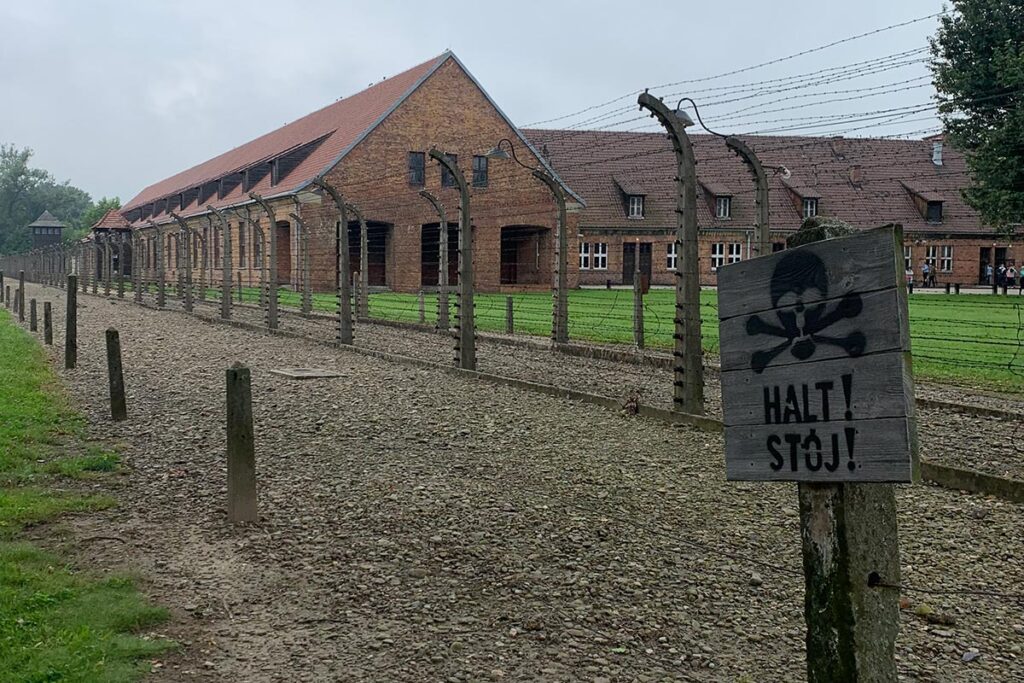
Surprisingly, the most challenging part of the trip for me was visiting Majdanek Death Camp. Majdanek was both an extermination site and a work camp, located in the city of Lublin. During the time it was operating, 500,000 people from 28 nations and 54 different nationalities were imprisoned there. At this point in the trip, we had already visited other death camps in Poland, so I thought I had already seen the worst of it. Little did I know how this particular site would impact me.
Getting off the bus, I truly thought the area was beautiful, with a farmers market, green spaces, small surrounding neighborhoods, and people treating the camp as if it were a park. Without prior knowledge of its history, one would never know the true horrors that had taken place there. However, my horror intensified upon seeing the showers and gas chambers, where the blue residue from the Zyklon-B used for extermination still lingered.
The crematorium contained ovens and a sauna where SS commanders utilized the steam from burning bodies for their own pleasure — an incredibly terrifying realization. Outside the camp stood a large dome, containing the ashes of those who were murdered. Standing there in the cold, looking at a pile of human ash, is a feeling I can never explain. We all stood in silence, unable to fully comprehend what we were seeing.
My time in Poland was not a joyful experience, but it was certainly a meaningful one. Spending a week touring concentration camps was emotionally draining. However, entering the town of Tykocin was a refreshing contrast to the rest of the trip.
As we stepped into the Tykocin synagogue, we were welcomed by singing and dancing to traditional Jewish music. With delegations from the U.S., Mexico and Canada, we were all holding hands and celebrating our return to Tykocin and our living generation of Jewish descent.
During our visit to the town, we were led to the Lupochowa Forest, unaware of the meaning of the location. After Hitler invaded the Soviet Union, German forces returned to Tykocin. The Jews were told to gather for relocation to the Czerwony ghetto, but they only made it as far as the Lupochowa Forest before they were massacred by the SS officers and buried in trenches. We gathered in the forest, listening to the serenity in the midst of this grave site.
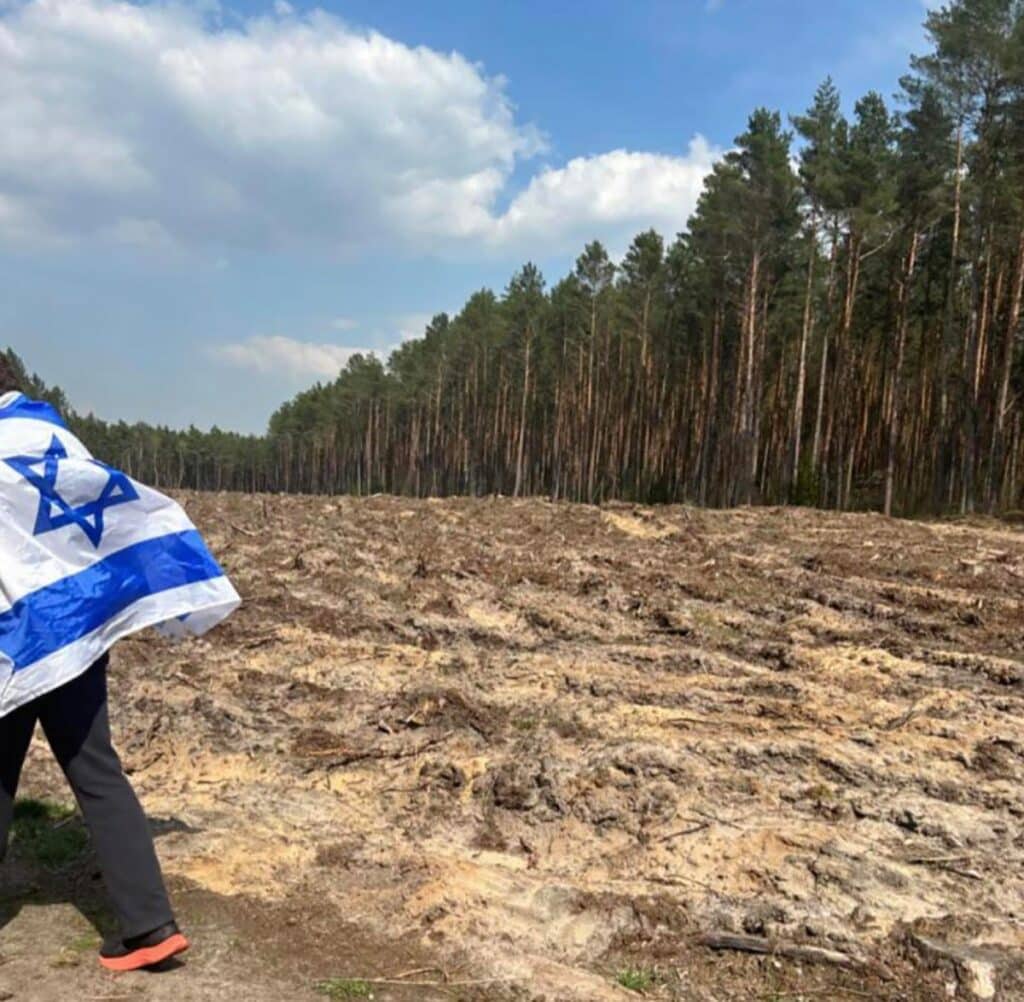
The transition from Poland to Israel was the most significant part of the trip for me. Poland represented a time of sorrow, where we remembered our ancestors who were murdered in a foreign land, with nowhere to escape to. In contrast, Zionism stands as a testament of the resilience of our people.
It is more than just a political movement; it embodies the belief that Jews have a right to self-determination and a safe haven in their ancient homeland. As someone who was born in Israel and moved to America at a young age, I sometimes feel distanced from my Israeli roots. The visit to Poland reminded me of how proud I am of my heritage and the significance of Zionism in a world where antisemitism still exists.
Conclusion
In the end, Liyah’s dad was right. Although we visited the country in different ways and were already advocating for our Jewish identities before our trips, we both left Poland deeply transformed.
There is no way to sugarcoat it — the trips were hard. Seeing the places where our ancestors died was incredibly painful, but inspired us in many ways. We realized how much the Jewish people have been through and why it is so important to educate others about our history and protect our homeland. We became more secure in our Jewish identities and were inspired to become more involved in issues regarding antisemitism in our hometowns.
Additionally, these trips expanded our love for Israel, as we came away with a deeper appreciation of the role of a homeland for minorities like ourselves. We are proud to be Jewish and no wave of antisemitism can ever erase that.
Originally Published Jun 21, 2023 12:41PM EDT


